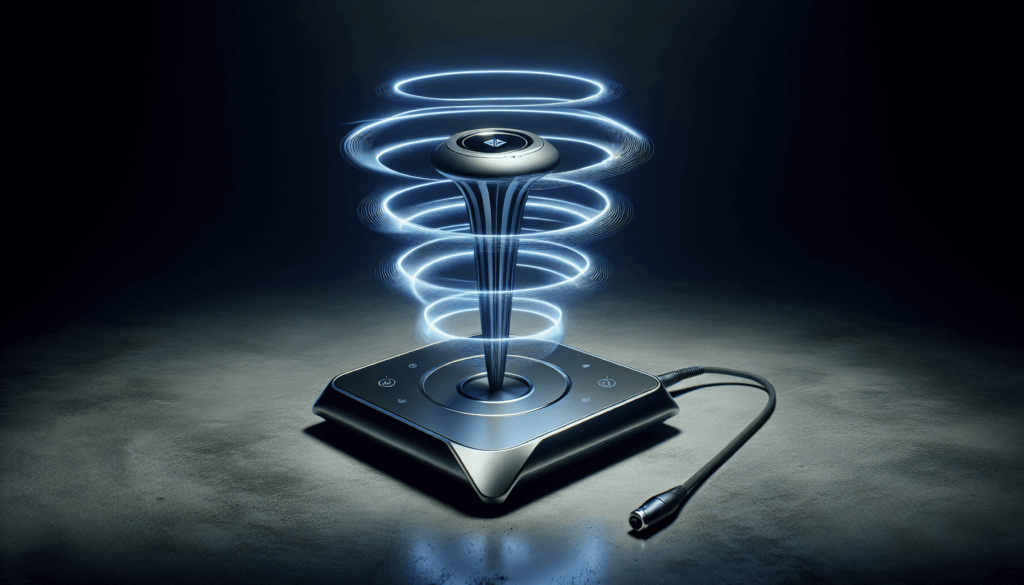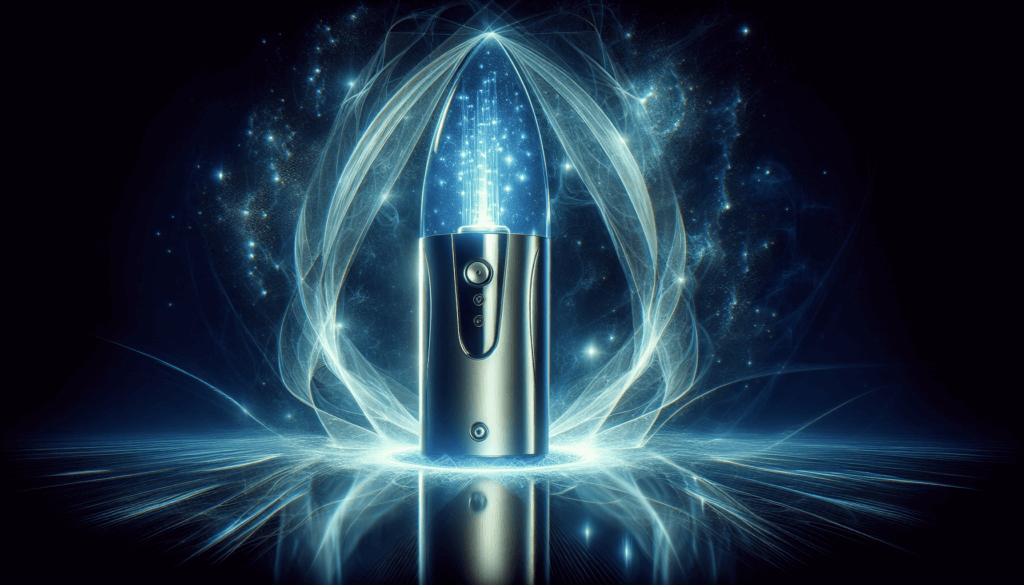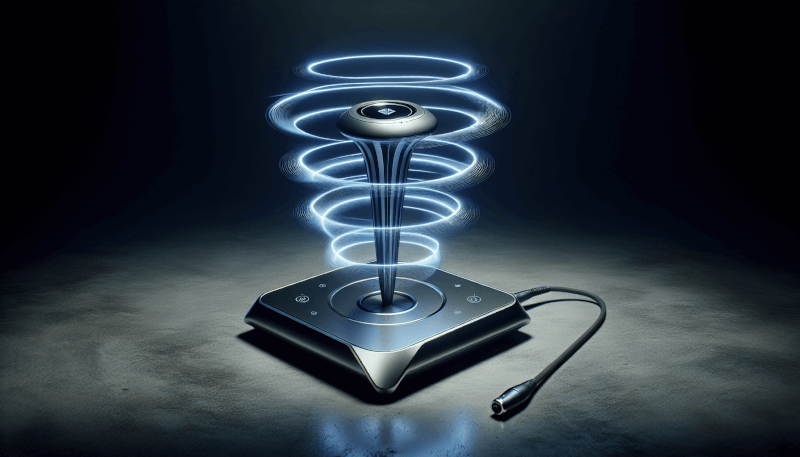Have you ever wondered what exactly PEMF therapy is and how it can benefit you? Well, wonder no more! In this article, we will explore the fascinating world of PEMF therapy and its incredible potential for improving your overall health and well-being. From its origins to its modern applications, we will delve into the science behind this revolutionary therapy and discover why it is gaining popularity among individuals seeking natural and non-invasive treatments. So, sit back, relax, and prepare to be amazed by the wonders of PEMF therapy!

Definition of PEMF Therapy
What does PEMF stand for?
PEMF stands for Pulsed Electromagnetic Field therapy. It is a non-invasive and drug-free treatment that uses electromagnetic fields to improve the overall health and well-being of the body.
How does PEMF therapy work?
PEMF therapy works by delivering electromagnetic pulses to the body, which penetrate deep into the tissues and cells. These pulses stimulate the electrical and chemical processes in the body, promoting cellular regeneration, reducing pain and inflammation, and enhancing overall health.
What are PEMF devices?
PEMF devices are electronic devices that generate pulsing electromagnetic fields. There are various types of PEMF devices available, ranging from small, portable devices for personal use to larger devices used in medical clinics. These devices vary in terms of frequency, intensity, and application method, allowing individuals to choose the most suitable option for their specific needs.
History and Background
Origins of PEMF therapy
PEMF therapy has been used for centuries, with historical evidence dating back to ancient civilizations. Ancient Greeks were known to use electric fish to treat body ailments, while ancient Egyptians used electric eels for pain relief and healing. In the late 18th century, the discoveries of electricity and magnetism led to further exploration of their therapeutic potential.
Evolution and development of PEMF devices
The field of electromagnetic therapy continued to advance throughout the 20th century. In the 1950s, researchers discovered that applying specific electromagnetic fields to bone fractures could accelerate the healing process. This discovery paved the way for the development of modern PEMF devices. Over time, technological advancements have led to the creation of more specialized and advanced PEMF devices, allowing for targeted treatments and improved outcomes.
Benefits of PEMF Therapy
Pain relief and management
One of the significant benefits of PEMF therapy is its ability to alleviate pain. The electromagnetic pulses generated by PEMF devices help to reduce pain signals in the body, providing relief from chronic pain conditions such as arthritis, fibromyalgia, and sports injuries. By modulating the nervous system’s response to pain, PEMF therapy offers a safe and effective alternative to traditional pain management methods.
Improved circulation
PEMF therapy has been shown to improve blood circulation in the body. The electromagnetic pulses help to dilate blood vessels, increasing blood flow to various organs and tissues. This improved circulation enhances the delivery of oxygen and nutrients to cells while promoting the removal of waste products. Consequently, PEMF therapy can have a positive impact on overall cardiovascular health and support the body’s natural healing processes.
Enhanced healing and tissue repair
By stimulating cellular activity, PEMF therapy promotes optimal healing and tissue repair. The electromagnetic pulses penetrate deep into the tissues, activating cellular metabolism and enhancing the production of ATP, which is responsible for providing energy to cells. This increased energy production accelerates healing processes, making PEMF therapy beneficial for wound healing, bone fractures, and other injuries.
Reduced inflammation
Inflammation is a natural response of the body to injury or infection. However, chronic inflammation can lead to various health issues. PEMF therapy has been shown to reduce inflammation by modulating the production of inflammatory mediators and promoting a state of balance in the body. This anti-inflammatory effect makes PEMF therapy a valuable tool in managing conditions such as arthritis, where inflammation is a prominent feature.
Stress reduction and relaxation
PEMF therapy has been found to have a calming effect on the body, helping to reduce stress and promote relaxation. The electromagnetic pulses help to balance the autonomic nervous system, which controls the body’s response to stress. By promoting a state of relaxation, PEMF therapy can improve overall mental well-being and contribute to better stress management.
Improved sleep quality
Many individuals struggle with sleep issues, such as insomnia or poor sleep quality. PEMF therapy has shown promise in improving sleep patterns by regulating brainwave activity and promoting deep, restorative sleep. By using PEMF devices before bedtime, individuals can create a conducive environment for a more restful and rejuvenating sleep experience.
Enhanced athletic performance
Athletes and fitness enthusiasts can benefit from using PEMF therapy to enhance their performance and recovery. PEMF devices can be used to support muscle strength and endurance, reduce exercise-induced inflammation and soreness, and facilitate faster recovery from intense training or injuries. By incorporating PEMF therapy into their routine, athletes can optimize their physical performance and minimize the risk of injuries.
Conditions Treated with PEMF Therapy
Chronic pain
PEMF therapy has been widely studied and used as a non-invasive and drug-free treatment option for chronic pain management. Conditions such as arthritis, fibromyalgia, back pain, and neuropathic pain have shown positive responses to PEMF therapy, with many individuals experiencing significant pain reduction and improved quality of life.
Arthritis
Arthritis is a common condition characterized by joint inflammation and pain. PEMF therapy has shown effectiveness in managing arthritis symptoms by reducing inflammation, promoting joint flexibility, and alleviating pain. By incorporating PEMF therapy into their treatment plan, individuals with arthritis can experience relief and improve their overall joint function.
Fibromyalgia
Fibromyalgia is a chronic condition characterized by widespread musculoskeletal pain, fatigue, and cognitive issues. PEMF therapy has shown potential in reducing fibromyalgia symptoms, providing pain relief, and improving overall well-being. By using PEMF devices regularly, individuals with fibromyalgia can complement their existing treatment strategies and potentially experience a reduction in pain intensity and improved quality of life.
Sports injuries
From minor sprains to more severe muscle tears and fractures, sports injuries can significantly impact an athlete’s performance and recovery time. PEMF therapy is increasingly used as a supportive treatment for sports injuries due to its ability to accelerate healing, reduce inflammation, and alleviate pain. By incorporating PEMF therapy into their rehabilitation plan, athletes can enhance their recovery process and return to their sport more quickly.
Depression and anxiety
Mental health conditions like depression and anxiety can have a profound impact on an individual’s well-being and daily functioning. PEMF therapy has shown promising results in improving mood, reducing anxiety, and alleviating symptoms of depression. By utilizing PEMF devices alongside conventional therapies, individuals with depression and anxiety can potentially experience a reduction in symptoms and an improvement in their overall mental health.
Insomnia
Sleep disturbances and insomnia can significantly impact an individual’s energy levels, mood, and overall quality of life. PEMF therapy has shown potential in improving sleep quality and promoting deeper, more restorative sleep. By incorporating PEMF devices into their bedtime routine, individuals struggling with insomnia can create a conducive sleep environment and potentially experience a positive shift in their sleep patterns.
Wound healing
Whether it’s a surgical incision, a minor cut, or a chronic wound, proper healing is crucial for minimizing complications and achieving optimal outcomes. PEMF therapy has been shown to accelerate wound healing by promoting cellular regeneration, enhancing blood circulation, and reducing inflammation. By using PEMF devices in wound care, individuals can aid the healing process and potentially reduce the risk of infections and other complications.
Bone fractures
Fractures are common injuries that require proper healing to restore bone strength and function. PEMF therapy has been extensively studied for its potential in accelerating bone fracture healing by stimulating osteoblasts (cells responsible for bone formation) and increasing bone mineral density. By incorporating PEMF therapy into their treatment plan, individuals with bone fractures can potentially enhance the healing process and reduce the time required for recovery.

Scientific Research and Evidence
Studies supporting the effectiveness of PEMF therapy
Numerous scientific studies have investigated the efficacy of PEMF therapy in various health conditions. For instance, a study published in the “Journal of Clinical Rheumatology” demonstrated the positive effects of PEMF therapy in reducing pain and improving function in individuals with osteoarthritis of the knee. Another study published in “Pain Research and Management” showed significant pain reduction in individuals with chronic low back pain who received PEMF therapy. These studies, among many others, support the use of PEMF therapy as a viable treatment option for pain management and other health conditions.
Clinical trials and case studies
Beyond individual studies, clinical trials and case studies have further contributed to the growing body of evidence supporting the effectiveness of PEMF therapy. Clinical trials provide a controlled environment to assess the impact of PEMF therapy on specific conditions or populations, while case studies offer insights into individual experiences and outcomes. Collectively, these research methods have showcased the potential benefits of PEMF therapy in various contexts, driving further exploration and adoption of this therapeutic modality.
Safety and Side Effects
General safety guidelines
When used properly and according to guidelines, PEMF therapy is generally considered safe and devoid of significant side effects. Manufacturers of PEMF devices provide specific instructions regarding usage, frequency, and intensity. It is essential to follow these guidelines to ensure optimal safety and effectiveness. Additionally, it is advised to consult with a healthcare professional before starting PEMF therapy, especially if one has an underlying medical condition or is undergoing any other form of treatment.
Possible side effects and precautions
While rare, some individuals may experience minor side effects from PEMF therapy. These can include temporary pain or discomfort during or after the session, skin irritation at the application site, or mild headaches. However, these side effects typically subside quickly and do not pose any long-term risks. It is important to monitor one’s response to PEMF therapy and communicate any concerns or adverse reactions to a healthcare professional.
Who should avoid PEMF therapy?
Although generally safe, there are certain instances where individuals should avoid PEMF therapy or use it with caution. Pregnant women, individuals with pacemakers or other implanted electronic devices, individuals prone to seizures, and those with active infections should consult with a healthcare professional before considering PEMF therapy. It is crucial to prioritize personal safety and seek expert advice when embarking on any new therapeutic approach.
Different Types of PEMF Devices
Static field PEMF devices
Static field PEMF devices produce a constant magnetic field that does not vary in intensity or frequency. These devices are often used for their calming and relaxing effects but may have limited therapeutic applications compared to other types of PEMF devices.
Low-frequency PEMF devices
Low-frequency PEMF devices produce electromagnetic pulses at frequencies typically ranging from 1 to 100 Hz. These devices are commonly used for pain management, wound healing, and cellular regeneration. They penetrate deeper into tissues and have been extensively studied for their therapeutic potential.
High-frequency PEMF devices
High-frequency PEMF devices generate electromagnetic pulses at frequencies higher than 100 Hz. These devices are often used for tissue repair, improved circulation, and enhanced cellular metabolism. They may be suitable for specific applications where higher frequencies are required.
Whole-body PEMF devices
Whole-body PEMF devices are designed to deliver electromagnetic pulses to the entire body simultaneously. They typically involve reclining on a specialized mat or bed that emits pulsing electromagnetic fields. These devices are popular for overall health maintenance, pain management, stress reduction, and improving sleep quality.
Localized PEMF devices
Localized PEMF devices are designed to target specific areas of the body. They often come in the form of small applicators or pads that can be placed directly over the affected area. These devices are commonly used for targeted pain relief, injury recovery, and addressing localized issues such as joint pain or muscle soreness.
Choosing the Right PEMF Device
Considering individual needs and conditions
When choosing a PEMF device, it is essential to consider your specific needs and health conditions. Assess what you hope to achieve with PEMF therapy and determine the appropriate frequency, intensity, and application method for your desired outcomes. Individualized treatment plans can help optimize the benefits of PEMF therapy.
Consulting with a healthcare professional
Before purchasing or using a PEMF device, it is advisable to consult with a healthcare professional, such as a doctor or physical therapist. They can provide personalized guidance based on your health history, current conditions, and treatment goals. Their expertise will ensure that you select a PEMF device that aligns with your needs and will be safe and effective for you.
Researching device specifications and features
Understanding the specifications and features of different PEMF devices is crucial in making an informed decision. Factors to consider include the device’s frequency range, intensity levels, waveform, ease of use, and any additional functionalities. Reading product descriptions, researching online, and comparing different options will help you find a PEMF device that suits your requirements.
Reading user reviews and testimonials
User reviews and testimonials provide valuable insights into the real-world experiences of individuals who have used specific PEMF devices. Reading these reviews can help you gauge the overall satisfaction, effectiveness, and reliability of the device you are considering. Take note of both positive and negative feedback to make an informed decision.
Accessing PEMF Therapy
Medical professionals and clinics
PEMF therapy is available in various healthcare settings, including medical clinics, rehabilitation centers, and wellness facilities. Medical professionals, such as doctors, physical therapists, and chiropractors, are trained in administering PEMF therapy and can provide treatments tailored to individual needs. Consult with medical professionals to explore in-person PEMF therapy options.
Home-use PEMF devices
The availability of home-use PEMF devices has made PEMF therapy more accessible to individuals in the comfort of their own homes. These devices are designed for personal use and come in various sizes, functionalities, and price ranges. Home-use PEMF devices provide convenience and flexibility, allowing individuals to incorporate PEMF therapy into their daily routines.
Conclusion
Summary of PEMF therapy and its potential benefits
PEMF therapy, or Pulsed Electromagnetic Field therapy, is a non-invasive and drug-free treatment that utilizes electromagnetic fields to support the body’s natural healing processes. With origins dating back to ancient civilizations, PEMF therapy has evolved and developed into various types of devices that offer unique benefits for pain relief, improved circulation, tissue repair, reduced inflammation, stress reduction, enhanced sleep, and athletic performance.
Scientific research, clinical trials, and case studies have provided evidence of the effectiveness of PEMF therapy in managing conditions such as chronic pain, arthritis, fibromyalgia, sports injuries, depression, anxiety, insomnia, wound healing, and bone fractures. PEMF therapy offers a complementary treatment option for individuals seeking non-invasive solutions for their health challenges.
Consideration of PEMF therapy as a complementary treatment option
When choosing PEMF therapy, it is essential to consider individual needs, consult with healthcare professionals, research different PEMF device options, and seek user reviews and testimonials. Access to PEMF therapy can be obtained through medical professionals and clinics, as well as through home-use PEMF devices that offer convenience and flexibility.
As with any therapeutic modality, it is crucial to prioritize personal safety, follow general safety guidelines, and be aware of possible side effects. Certain individuals, such as pregnant women and those with implanted electronic devices, should consult with healthcare professionals before using PEMF therapy.
In conclusion, PEMF therapy is a promising and evolving field of health and wellness. Its potential benefits and versatility make it a valuable complement to traditional treatments, providing individuals with additional options for managing pain, promoting healing, and enhancing overall well-being.


